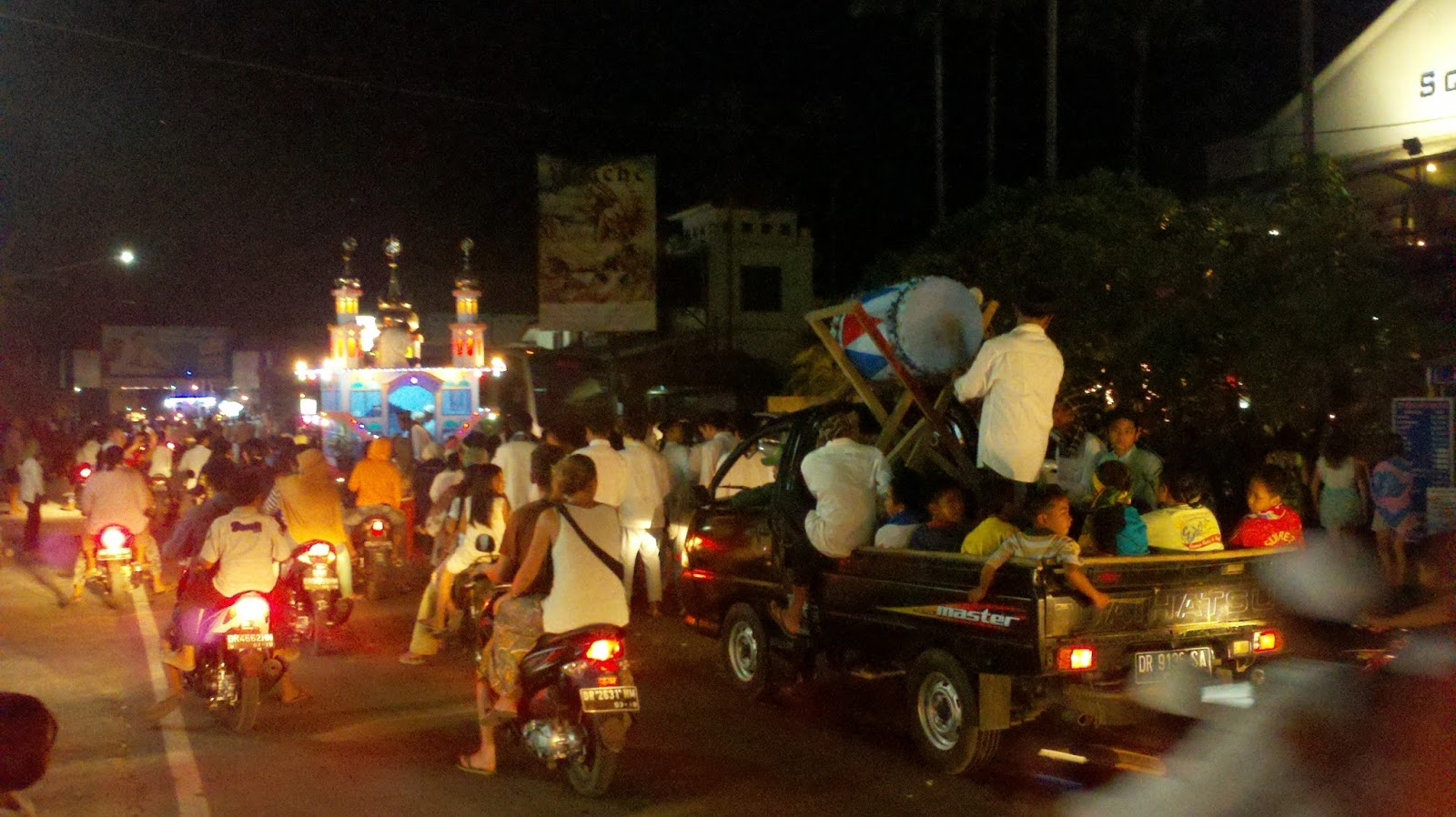 We got off the ferry in Padangbai and started in on what is one of my least favorite things - trudging around looking for a place to stay. Part of this is my fault. I bought a small suitcase that has roller wheels and backpack straps. But it doesn't really work that great as a backpack, and a backpack is needed much of the time around Bali. The streets and sidewalks usually aren't smooth enough for pulling a suitcase. So I was hot and uncomfortable, but fortunately we found a place pretty quickly. In general it is very easy to come to a town in Bali and find a clean room with a private bathroom with a western toilet for under $25/night. It might not include hot water, but in this warm climate that's not too big a deal. This room was $20/night, no hot water.
We got off the ferry in Padangbai and started in on what is one of my least favorite things - trudging around looking for a place to stay. Part of this is my fault. I bought a small suitcase that has roller wheels and backpack straps. But it doesn't really work that great as a backpack, and a backpack is needed much of the time around Bali. The streets and sidewalks usually aren't smooth enough for pulling a suitcase. So I was hot and uncomfortable, but fortunately we found a place pretty quickly. In general it is very easy to come to a town in Bali and find a clean room with a private bathroom with a western toilet for under $25/night. It might not include hot water, but in this warm climate that's not too big a deal. This room was $20/night, no hot water.This was one of the noisiest places we stayed at. A band was playing live music across the street in the evening and the roosters started up by 5 in the morning, followed by singing from the temple at 6.
We saw roosters in baskets/cages like this all over Bali. Cockfighting apparently is popular, both in the temple and just for fun. These guys make a racket in the mornings.
I hate to post this picture, but this was the reality. There was a lot of garbage on the beach in Padangbai by where the ferry comes in.
We decided to stay in Padangbai two nights so the next day we hired a driver to take us around to see nearby sights. Our first stop after lunch was Tenganan, a village of Bali Aga people who are descended from the first inhabitants of Bali. They are known to be more conservative and to cling to old ways, although they also practice Hinduism.
A guide took us through the village and told us about their customs.
Next stop was the Water Palace at Tirta Gangga:
We headed back to Ubud on the morning of the 11th. On our route we saw about 10 groups of students marching in the streets. We've been told that this is all practice for the big day - August 17th, Indonesia's Independence Day. I won't be here, but Liz is going to check it out.
 |
| Students marching |
Liz and I have seen offerings everywhere, everyday, in Bali. We decided to take a class at the Arung Gai Museum of Art on offering making. We were hoping to learn more about the meaning of the offerings, what type is done when, that sort of thing, but it turned out to be a class on physically making the offerings.
Our instructor cut up the leaves and then showed us how to fold and stitch them together. We had a hard time getting the hang of it! Balinese women typically spend at least an hour everyday making these, so I'm sure they get very fast.
Next we added flowers, each color and type in it's own spot, with a decoration on top. Some we took to the temple on the museum grounds, some our instructor took home to her family temple, and we took two back to our homestay to give to our hosts.
Offerings, like dance, music, wood carvings, and stone sculpture, are all done as part of a Balinese Hindu practice to please the gods and keep good and evil in balance. To outsiders such as ourselves, it is very complicated, but the results seem to be a harmonious society with beauty in evidence everywhere. One of my favorite aspects of Balinese culture is the music and dance. Ubud has 8 to 10 dance performances every night. We've gone to three performances since we returned to Ubud. Last night we saw the Kecak dance, which involved more than 60 men as the chorus, chanting and clapping, while dancers acted out a well-known story from the Ramayana. It is really amazing. We didn't have a camera that worked well in the dim light so I don't have pictures. However, watch a bit of this video from youtube, it's pretty interesting.
 |
| Kecak dancers |
Another type of dance that is very popular is done the Legong, done to the gamelan orchestera, mostly by young women. Here's another borrowed video clip that shows the type of dance we've watched.
 |
| Legong dancer |
I'm running out of time, leaving soon to catch the shuttle to take me to the airport and on to home. I feel I've barely scratched the surface of life in Bali. I hope I get the chance to come back again.



















































